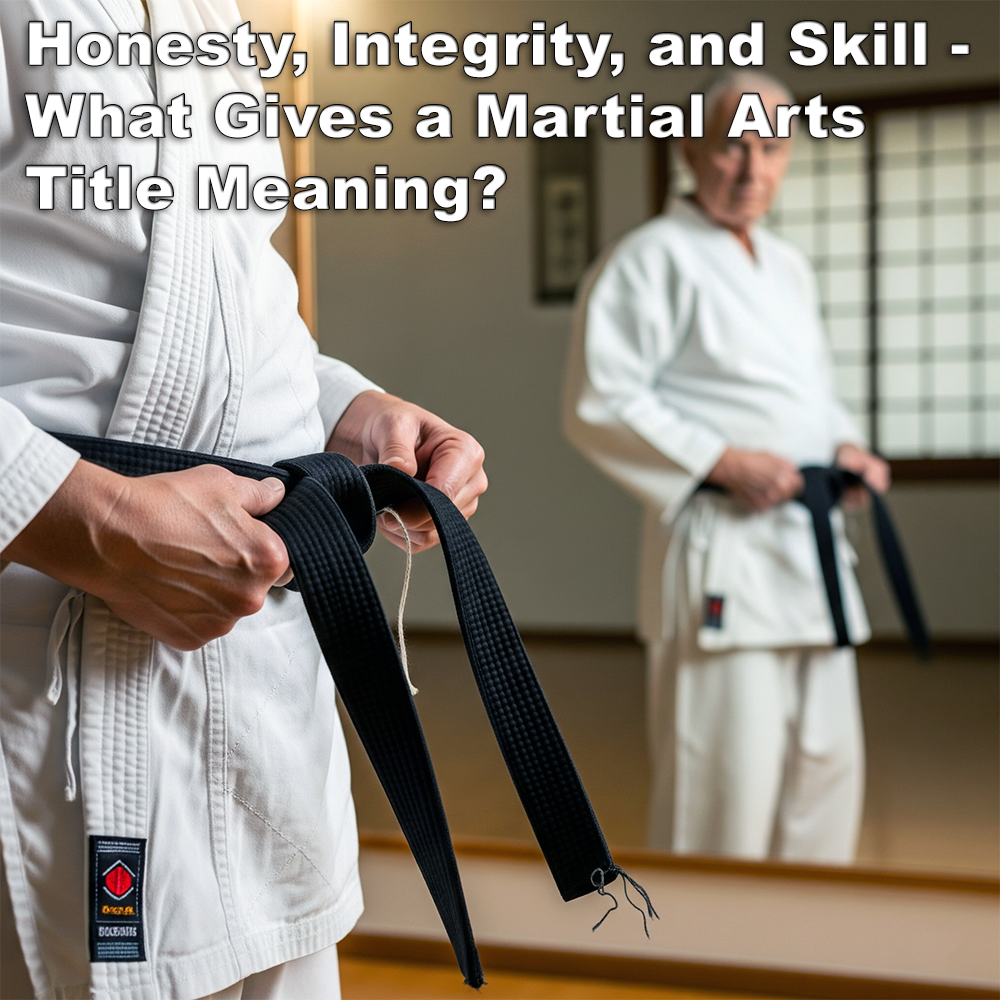
Honesty, Integrity, and Skill – What Gives a Martial Arts Title Meaning?
Posted by ADAM CARTER on AUG 19, 2025

Honesty, Integrity, and Skill – What Gives a Martial Arts Title Meaning?
(Approx 2 minute 30 second read)
In recent years, it seems that rank and titles in the martial arts have become surprisingly easy to obtain – and very controversial.
Certificates can be printed, titles adopted, and positions claimed with little more than a website and a few followers.
But when we lose sight of what those titles originally meant, we also lose part of the foundation that gives the art its credibility, doesn’t it?
I saw recently someone with the title of soke (宗家) heading a new association. It does make me wonder why some choose to do this – if they actually understood Japanese custom, they’d realize it just doesn’t work.
The title soke, signifies the head of a family or lineage, specifically the headmaster or grandmaster of a particular school or style.
While sometimes mistakenly associated with the founder (kaiso in Japanese) of a style, soke is more accurately understood as the inheritor and leader of an established tradition passed down within a family or lineage.
In classical systems (koryu), the soke was the ultimate authority within the art, responsible for determining curriculum, awarding rank, and preserving the integrity of the tradition.
The term is somewhat controversial in the West, with some individuals self-proclaiming the title without proper lineage or authority. In some cases it’s self-adopted after creating a new system, or used as a way of creating new associations. Whether we agree with that or not, it’s worth recognizing that in Japan this kind of self-designation would generally be seen as inappropriate.
The same goes for titles such as hanshi, kyoshi, and renshi. These are not higher dan grades, but teaching titles (shogo) awarded within certain organizations to recognize different levels of experience, maturity, and contribution to the art.
As an example, hanshi isn’t just someone who “has a high rank” – it traditionally implies a person with deep technical understanding and high moral standing of the system and group they belong to.
The title shihan simply means “model instructor” or “senior instructor”, and again, it is something given by others – not something you should call yourself – it’s an honorific.
In traditional Japanese etiquette, you don’t introduce yourself with an honorific title. You introduce yourself by your name (with the exception of teaching school children), and others use the appropriate title to address you as a sign of respect. This applies to titles like sensei and shihan just as it does to honorifics like san or sama.
While some individuals in the West may use the title as part of their name on websites or business cards, this is generally not the traditional practice in Japan.
Even the everyday term sensei is often misunderstood. Literally meaning “one who has gone before”, it too is an honorific, used by students to show respect to their teacher. It is not a title to be self-declared or added before your own name – it’s something others call you, if and when you’ve earned that respect.
None of these titles are inherently good or bad. They have meaning because of the standards behind them.
Perhaps the more important question is not which title someone uses, but whether their skill, behavior, and example actually reflect it.
In the end, titles don’t define the martial artist – behavior and skill do. If you choose to use titles, at least understand the difference.
Written by Adam Carter – Shuri Dojo
